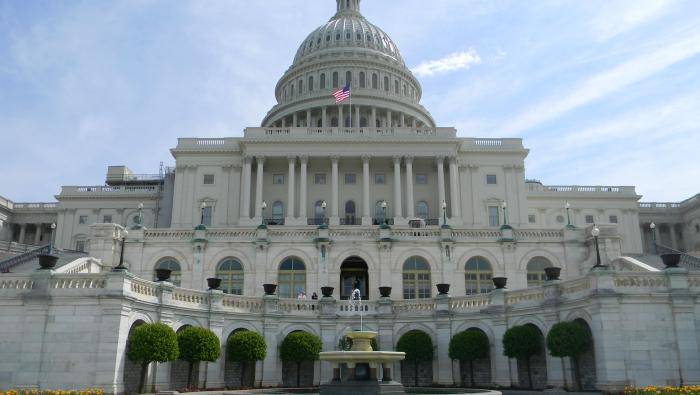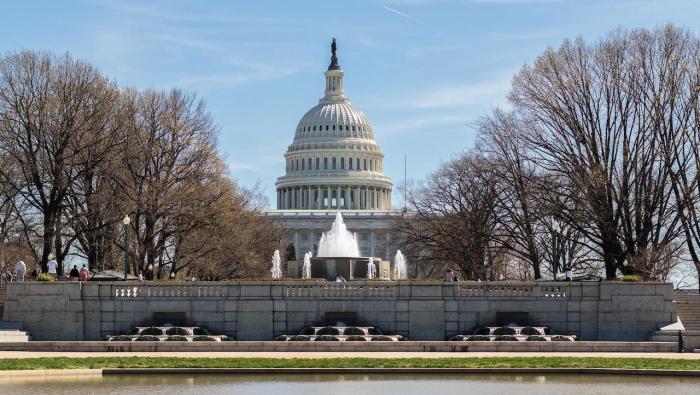There is no short-term fix for the high price of oil, concluded panelists at the Air Service Energy Summit, held on July 10 in Washington, D.C. “The key here is that we don’t have a lot of answers,” said Jim Elwood, chairman of the American Association of Airport Executives (AAAE), which assembled 200 executives from all facets of aviation–chiefly the legacy carriers and their airports–along with senior members of Congress, the Department of Transportation, analysts, academics and the alphabets to discuss the issue.
Although they acknowledged there are few answers, attendees were nearly unanimous in their opinion that financial speculators are to blame for the ever higher price per barrel of oil. Some say that half of the price of every barrel is from speculation, while others contend that it’s only 10 percent. Despite acknowledging this uncertainty and a litany of other factors such as a Third World economy ravenous for oil, the airline industry stood ready to pump 100 percent of its blame to speculators.
Sen. Byron Dorgan (D-N.D.), senior member of the Commerce Committee and aviation subcommittee, set the tone with keynote remarks. Only “reckless and unbridled speculation” could explain the doubling of cost per barrel in the last 15 months, said Sen. Dorgan. He also blamed “brain-dead regulation” and ham-handed federal efforts to invite alternatives to conventional oil fuels, citing inefficient tax credits and only a sporadic focus since the early 1990s.
“We need to set the futures market straight and try to wring these speculators out,” said Dorgan, who last month introduced the End Oil Speculation Act of 2008, to compel the Commodities Futures Trading Commission to apply emergency powers. Proposed measures include raising the marginal cost of trading oil contracts, for example, by limiting a loan to 75 percent of the purchase price. Today, oil futures are leveraged with as little as 7 percent in cash.
Dorgan railed against the trade deficit devaluing the U.S. dollar, the unfunded Iraq war and the subprime mortgage crisis for bit parts in driving oil inflation.
He wants to expand Oil Lease 181 to drill deeper and wider in the Gulf of Mexico and retract the Cuban embargo to beat competing nations to the rich fields presumed nearby.
Glenn Hipp, vice president of supply chain and fuel for JetBlue Airways, asked for a show of hands as to which of several factors was most responsible for the current cost of fuel. The list included a conspiracy among oil-producing nations; failure of the production and refining infrastructure, such as the dip after Hurricane Katrina; waning supply; increasing demand by China and India; and speculation. Despite the group’s focus on oil futures trading, Hipp’s ad hoc survey showed attendees regarded all of these factors as equally significant.
Mary Peters, Secretary of the Department of Transportation, noted that for every penny increase in jet fuel the airlines pay another $15.9 million per month, and, like Dorgan, she wants more drilling for conventional oil. But Peters also used the forum to announce an X-Prize award for innovation in alternative and renewable fuels. “The purse is expected to be substantial,” said Peters, saying that previous aid was “spread like peanut butter” unlike this new highly visible effort, though it may take 14 months to develop specific terms as well as funds for an actual prize. Secretary Peters also directed the FAA to provide War Risk Insurance to the airlines for the rest of 2008 at current terms, saying that a commercial market solution would cost twice as much. Peters defended the use of auctions to “de-peak” the demand for landing slots, despite such auctions favoring the largest carriers, and praised airports for recent moves to aid carriers, such as a supply of preconditioned air at the gate to save idling power, and more efficient taxi procedures.
Will Ris, senior vice president of government affairs for American Airlines, pointed out that legacy carriers might have an advantage over newer entrants since their aged fleet is already capitalized. “If you have a whole fleet of brand new airplanes you can’t just ground them and ride this out.”
Ris also discussed the difficulty of raising international fares to compensate for domestic losses, since European carriers enjoy an edge from buying fuel with weak U.S. dollars. Like other mainline carriers, Ris argued for a reduction in seats and routes to create an artificial scarcity, leading to higher fares. ATA executive vice president John Meenan believes that the transparency of the pricing system would allow fare wars to continue. “If it were as easy as charging $10 more, don’t you think these companies would have thought of that?”
Challenges for Regionals
Tom Berry, principal economics and business analyst for Mitre, was among several analysts predicting a renaissance in turboprops for their fuel economy, particularly in the 70 percent of U.S. airports served exclusively by the regionals. Berry’s recent survey concluded that 42 percent of businesses plan to cut air travel compared with 9 percent a year ago. For perspective, Berry noted that the market cap of the “Big Six” U.S. airlines was equal to two weeks of revenue for ExxonMobil.
Roger Cohen, president of the Regional Airline Association, said that the fate of regionals is tied to the mainline carriers, though with pass-through costs five RAA members had made tidy profit during this year’s first quarter. Nonetheless Cohen acknowledged that rising loads by the regionals have made them a scapegoat for airport congestion and unhealthy price wars on certain routes.
One of the greatest victims of high fuel cost, and largely without a unified voice for reform, is Essential Air Service. Before the recent rise in fuel prices, carriers were reluctant to serve remote EAS communities given the insufficient subsidy; as costs have increased, they have abandoned some of the routes and are likely to drop more. The Alaskan region is among the hardest hit. Newer point-to-point operators are unlikely to step in; only the regionals, via their parents the legacy carriers, might be enticed to reconnect.
Mark Anderson, United Airlines vice president of government affairs, summarized that no legacy carrier is making money running an airline, though at least one is doing so using fuel price hedging. Hedging is a distant and, for now, acceptable relative of speculation, since the commodity is burned in flight rather than against the bottom line.
The forum remained largely free of traditional frictions amongst segments until Cyriel Kronenburg of IATA presented his slides, depicting business jets as the main recipient of subsidies by users of commercial aviation. However, he noted, “I’m showing a corporate jet but should also mention the railroads and cars.” He explained that a stop at the Canadian border costs the driver of a car nothing, but it costs each airline passenger $5.






